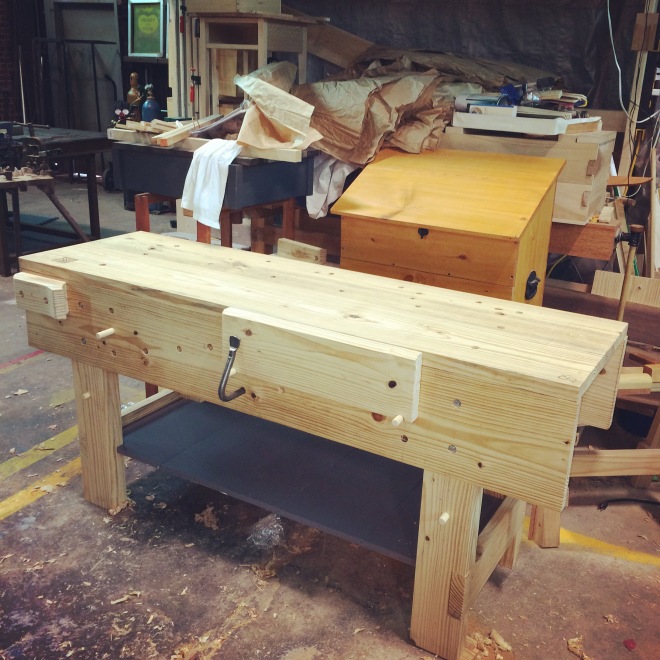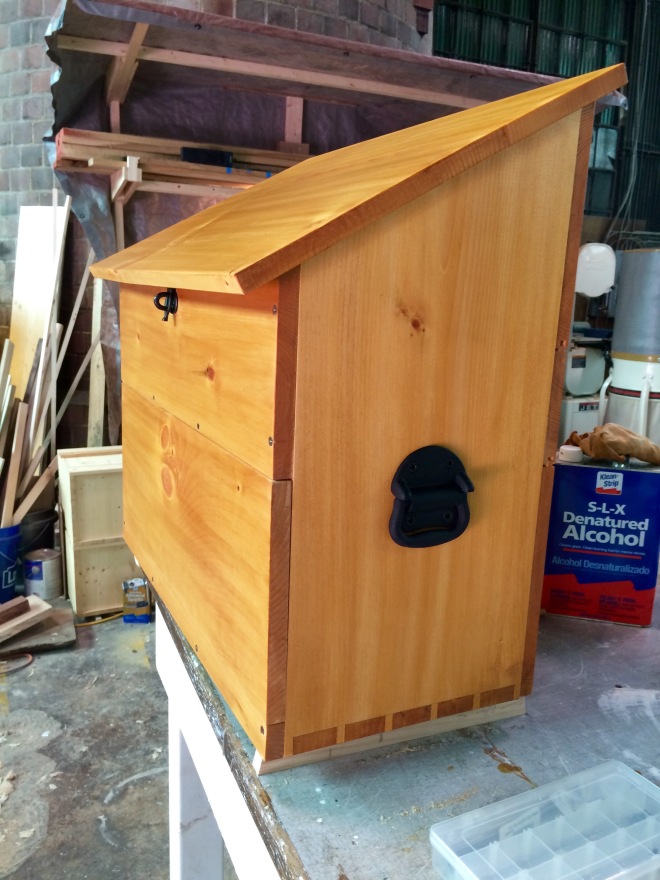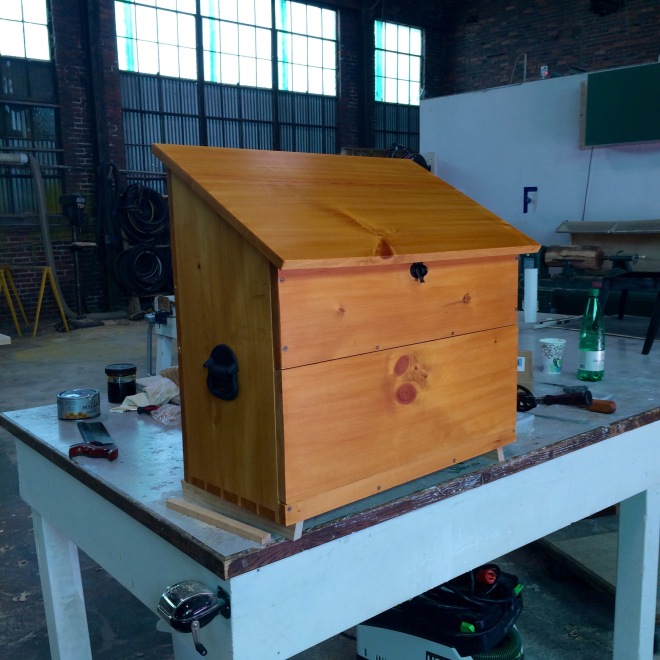I moved my shop into a shared maker-space 14 months ago. This turned out to be a transformative experience for me. Being around other woodworkers and makers of various sorts has been incredibly inspiring. One of the things I was recently inspired to do was construct some gear for the community of makers in our shop.
In our shop I am the only woodworker with much hand-tool experience. My bench was moved to the new space, though was not really available for others to use. If you have ever tried woodworking without a good bench, you know how miserable this experience is, particularly if you are attempting to use any sort of hand-tool. There were in fact several worktables available to the woodworkers in our shared space, but none suitable for serious work holding. After the recent FWW article on the low-budget Nicholson workbench, I became obsessed with the idea of building one. However, I wanted it to be available not just for myself, but for the other members and any students coming through the shop.

So I managed to build one of these benches, spending less than $200. And it has been a joy to use. I have also been happy to see others making use of it and enjoying woodworking more because of having access to it. This ended up leading to a desire on my part to put together a shaving horse as well, as we do have a growing contingent of spoon-carvers at our shop.

The shaving horse design is 1/2 based on Peter Follansbee’s design, found here. The legs are different because my reamer hasn’t arrived yet, so I took a design cue from my saw-benches (Chris Schwarz’s design) for the back legs. The front leg pitches forward to allow the clamping apparatus to travel appropriately while in use. It also apparently makes it look like a motorcycle. I’ve heard people at the shop refer to it as a ‘chopper.’
Next I’ll be making some adjustments to my tool-chest, and I think I’ll begin prototyping some cabinet designs I’ve been dreaming about. Next month we are scheduled to move the shop to a new and better location.

















